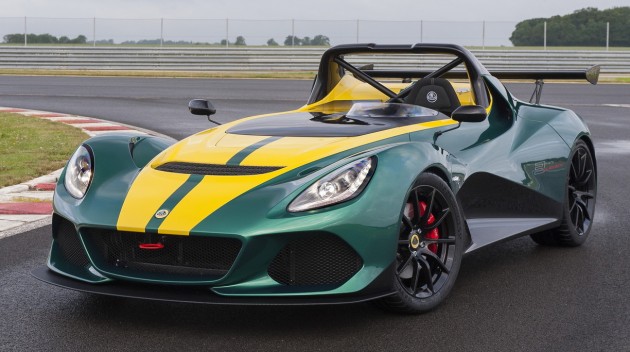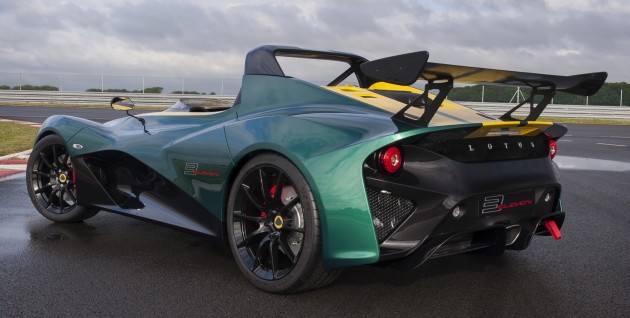
The new Lotus 3-Eleven has just been unveiled, and the Proton-owned British sports car maker says it's the fastest road-going car it has ever made. It follows the same lineage as the old 2-Eleven track car (is Lotus building towards making its own 9-Eleven?) by having just one seat, no roof and no doors.
Two versions will be made: Road and Race. One is road legal, while the other is for track-use only (no prizes for guessing which one is which). In terms of design, form follows function, says Lotus. Well, could have fooled us, as it looks absolutely bonkers!
Inside, it's a focussed racing car affair. There's a colour TFT screen instrument cluster, quick-release steering wheel and a Lotus sports seat with a four point harness. In case you need one (though likely never), there's an optional passenger seat offered too. The Race model gets an FIA-approved driver's seat with a six-point harness, plus a fire extinguisher and battery kill switch.
Power comes from an unrated version of the latest Evora 400's Toyota-sourced supercharged 3.5 litre V6 engine. Outputs are now up to 450 hp at 7,000 rpm and 450 Nm of torque from 3,500 to 6,500 rpm. A six-speed manual sends power to the rear wheel in the Road version, while the Race model gets a sequential 'box. An LSD is standard.

The bespoke chassis is pure Lotus, using extruded and bonded aluminium sections. A rollcage is a standard-fit on both variants, though the Race version gets addition bars to meet international motorsport requirements. Dry weight is as low as 900 kg for the Race model, making up a power to weight ratio of over 500 hp per tonne.
It's no surprise, then, that Lotus claims a 0 to 96 km/h (60 mph) time of less than 3.0 seconds, on to a top speed of 290 km/h for the Road version. The Race model gets a slower maximum speed of 280 km/h, due to its more aggressive aero kit (pictured here).
Excellent handling's a given for a Lotus. This one features all-around lightweight double wishbones suspension, adjustable front anti-roll bar and Eibach springs with Öhlins adjustable dampers. The brakes are huge 332 mm slotted discs with AP Racing four-piston calipers.
Covering the brakes are lightweight forged aluminium wheels, with Michelin Pilot Super Sport tyres measuring 225/40 ZR18 up front and 275/35 ZR19 round the rear. The rubber is swapped for a set of Michelin Pilot Sport Cup 2 for the Race version, along with upgraded brake pads too.
Group Lotus CEO Jean-Marc Gales claims that "this new car is a giant slayer, capable of embarrassing far more expensive rivals. It condenses our engineering know-how into one, hardcore package, and is so focused that it won't suit everyone. This is a perfect demonstration of the faster and lighter concept, something which will be crucial to all Lotus cars in the future."
Only 311 3-Elevens will be made (very funny, Lotus), each apparently "hand-built" in Hethel, England. Production will start in February 2016, priced in the UK at £82,000 (RM488,800 at current exchange rates) for the Road version, and £115,200 (RM686,700) for the Race – making it Lotus' most expensive production car ever.


No comments:
Post a Comment